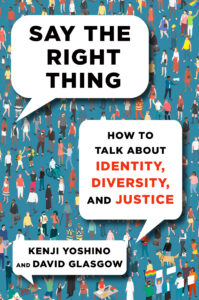Why Disability Diversity Is Important in the Judiciary
Earlier this year, President Biden nominated his first judicial nominee who has a disclosed disability, Jamal N. Whitehead. Whitehead is a litigator in Seattle. He also uses a prosthetic leg. Although 26 percent of the United States’ population has some type of disability, the number of legal professionals with disabilities, including judges, is much lower. There are many reasons for low numbers of disabled judges, including implicit and explicit bias, pipeline issues, stigma associated with having and disclosing a disability, and an overall lack of data. Indeed, people with disabilities are sometimes termed “the forgotten minority,” despite being the nation’s largest minority. Fortunately, more organizations are beginning to recognize disability as an integral part of the diversity, equity, and inclusion movement. This article discusses why disability diversity is important in the judiciary and how disability diversity is currently tracked (if at all), and it provides the first-ever attempt at publishing a list of judges with disabilities.
A judiciary that reflects its population is an important goal, and disability is part of our nation’s populace. Among the sixty-one million adults who have some type of disability in the United States, disabilities are wide-ranging. Although the typical symbol for disability is a person in a wheelchair, disabilities can be visible or invisible. The Americans with Disabilities Act (ADA) defines disability as a physical or mental impairment that substantially limits one or more major life activity. Unfortunately, in our inaccessible society, disability can have a detrimental effect on an individual’s health, social status, employment, and living situation.
Judges have an important role in deciding cases based on disability-related laws. They interpret the ADA, the Rehabilitation Act of 1973, the Individuals with Disabilities Education Act of 1990 (IDEA), the Affordable Care Act, disability benefits laws such as Social Security Disability Insurance, and state laws related to disability. The millions of adults living with disabilities are therefore dependent on a judiciary in which only a small percentage of judges may have a lived understanding of disability.
Although the number of judges with disabilities is small, the exact number is not entirely clear. For federal judges, the Federal Judicial Center keeps data on race, ethnicity, and gender but not disability. There does not appear to be any data on the number of judges with disabilities in state court, either. As the Center for American Progress notes, the “virtual absence of information on disabled [] judges is problematic and deserves more attention.” Indeed, it is difficult to measure progress if it is not tracked.
As an important concession, even if the judiciary tracked the number of judges with disabilities, the number likely would not be accurate. Many individuals do not disclose their disabilities. Stigma continues to exist surrounding disability, and judges who face reelection or reappointment may be wary to disclose.
Still, there are judges that have publicly disclosed disabilities. The following list represents the first known attempt to create a comprehensive list of current and former judges with disabilities in the United States. Some of these judges have retired or have passed away. The author would be grateful to receive any additional names to add to this list and apologizes for any omissions.
The list provides certain takeaways. Notably, most of the types of disabilities on this list are visible. It is likely many judges with invisible disabilities, including mental health issues, have not publicly disclosed them. Indeed, research notes that many judges experience depressive symptoms due to the unique nature of their positions, but the number of judges who have disclosed mental health issues is nearly zero. The main takeaway is simply how few disabled judges there are. As an example, there are only a handful of current federal judges with disabilities on the list, yet there are approximately nine hundred authorized federal judgeships. If Whitehead is confirmed, this number will grow by one, and hopefully this number will continue to grow to create a judiciary that better reflects its citizens.
- Sonia Sotomayor, United States Supreme Court Justice: Type I diabetes
- Bruce M. Selya, Senior United States Circuit Judge of the United States Court of Appeals for the First Circuit: legally blind
- David S. Tatel, Senior United States Circuit Judge of the United States Court of Appeals for the D.C. Circuit: blind, has a service dog
- Ronald Gould, United States Circuit Judge of the United States Court of Appeals for the Ninth Circuit: multiple sclerosis and uses a wheelchair
- Myron H. Thompson, Senior United States District Judge of the United States District Court for the Middle District of Alabama: polio survivor
- Vanessa Lynne Bryant, Senior United States District Judge of the United States District Court for the District of Connecticut: legally blind
- Robert W. Gettleman, Senior United States District Judge of the United States District Court for the Northern District of Illinois: polio survivor
- Donovan W. Frank, Senior United States District Judge of the United States District Court for the District of Minnesota: addiction recovery
- Eric N. Vitaliano, Senior United States District Judge of the United States District Court for the Eastern District of New York: blind
- Richard C. Casey, United States District Judge of the United States District Court for the Southern District of New York: blind
- Anne M. Burke, Illinois Supreme Court Justice: dyslexia
- Richard Bernstein, Michigan Supreme Court Justice: first blind justice on his court
- Richard B. Teitelman, Missouri Supreme Court Justice: blind
- Peter J. O’Donoghue, New York State Supreme Court: blind
- Grace Helen Whitener, Washington Supreme Court Justice: disabled
- Michael J. Murphy, Illinois Appellate Court Judge: addiction recovery
- Charles Susano, Tennessee Appeals Court Judge: paralysis, wheelchair user (longest-serving Tennessee appellate judge)
- Richard S. Brown, Wisconsin Court of Appeals Judge: late-deafened or hard-of-hearing
- Louis Corbin, Fourth Circuit Duval County (Florida) Judge: blind (appointed in 1972)
- Nicholas T. Pomaro, Associate Circuit Judge of Cook County (Illinois): blind (appointed in 1976)
- Tony Cothren, Jefferson County Circuit Judge (Alabama): blind
- Charles W. Ray Jr., Superior Court Judge for the Fourth Judicial District of Alaska: late-deafened or hard-of-hearing
- Andi Mudryk, Sacramento County Superior Court Judge: osteogenesis imperfecta (also notably the first openly transgender person in California history to be appointed to serve on California State Court)
- Tim Fall, Yolo County Superior Court (California) Judge: anxiety and depression
- David Holton, Jefferson County District Judge (Kentucky): Kentucky’s first blind judge
- Rachel Krause, Georgia Superior Court judge: paralysis, wheelchair user
- Patrick Flanagan, Washoe District (Nevada) Court Chief Judge: paralysis, wheelchair user
- Meenu Sasser, Palm Beach County (Florida) Circuit Judge: cancer survivor
- Robert Pipia, District Court of Nassau County (New York) Judge: muscular dystrophy, wheelchair user
- Howard Sturim, District Court of Nassau County (New York) Judge: Type II diabetes, uses a service dog
- Duncan Beagle, Genesee County (Michigan) Circuit Court judge: paralysis, wheelchair user
- Tom Dawson, Kentucky district judge: polio survivor, wheelchair user
- Ed Follis Jr., Lincoln County Justice Court Judge (Texas): polio survivor
- Dan Monaco, Florida Circuit Court judge: polio survivor
- Mary Beth O’Connor, Federal Administrative Law Judge: addiction recovery
- Ralph K. “Tripp” Anderson, III, Chief Judge, South Carolina Administrative Law Court: paralysis, wheelchair user
- Cathy Sellers, Administrative Law Judge, Florida Division of Administrative Hearings: cancer survivor
- Azeema Akram, Administrative Law Judge for Illinois Human Rights Commission: deaf
Source By https://businesslawtoday.org/2022/11/why-disability-diversity-is-important-judiciary/



